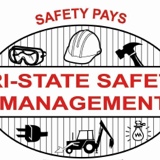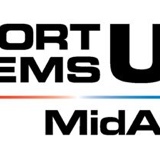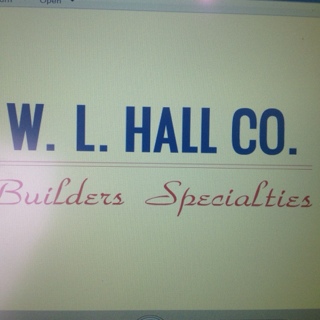Information
-
LOCATION OR CREW:
-
COMPANY:
-
Date of inspection:
-
Inspector:
-
Supervisor/Foreman:
-
Color Coding For Observed Violations: RED VIOLATIONS: FIX IMMEDIATELY - MAY REQUIRE SHUT DOWN YELLOW VIOLATIONS: FIX WITHIN 7 DAYS FROM DATE OF INSPECTION BLUE VIOLATIONS: FIX WITHIN 30 DAYS FROM DATE OF INSPECTION
Basic requirements
-
Is a company safety manual available for employees?
-
Is the OSHA 5in1 posters posted for employees to access?
-
Are fire extinguishers available throughout the work area and are locations marked? (1910-L)
-
Are monthly and annual fire extinguisher inspections updated?
-
Are first aid and BBP kits available to all employees? (1910-K)
-
Are first aid kit components within their viable use period?
-
Are MSDS sheets available to employees?
-
Are weekly safety meetings up-to-date?
General Safety & Health Provisions (1926-C&D)
-
Is there a need for housekeeping, temp lighting, or emergency equipment?
-
Are interior work areas of the jobsite sufficiently illuminated?
-
Is there 3' of frontal and 18" of side clearance around all emergency equipment?
-
Is special or specific hazard signage posted where applicable?
-
Is proper housekeeping practices being maintained to prevent slips, trips, and falls?
Personal Protective Equipment (1926-E)
-
Is PPE required on this jobsite?
-
Is PPE in use where required and properly adjusted and maintained? (Including hearing protection)
-
Have all pieces of PPE been checked to insure they are not expired? (5 year service life for most PPE)
-
Are all PPE properly stored (including respirators) and inspected if applicable?
-
Where required by OSHA; have employees completed annual fit and PFT testing before wearing respirators?
Material Handling & Storage (1926-H)
-
Is material/supplies being moved and stored on this jobsite?
-
Are all lifting components (straps, slings, chains, ropes, etc) in good working condition?
-
Where applicable, is the pick zone for lifts barricaded from unauthorized entry?
-
Are all objects/materials being lifted properly rigged?
Scaffolds (1926-L)
-
Are scaffolds in use on this jobsite?
-
Have all assembled scaffolds been inspected by a competent person prior to beginning each day's work and are the scaffolds tagged with the correct tag?
-
Are scaffold components properly attached and of the correct type?
-
Are scaffold work platforms properly planked and is fall protection in-place on the work platforms of the scaffold?
-
Are assembled scaffolds properly supported and leveled?
-
Are all mobile scaffolds being used in the proper manner and are they properly assembled?
Fall Protection (1926-M)
-
Is fall protection required on this jobsite? (Employees working over 6' from lower level)
-
Are all floor/wall opening properly guarded?
-
Are all fall protection components being used properly and of the correct type/size? Are inspections on equipment up-to-date?
-
Are man baskets being used on equipment certified by an engineer or manufacturer? (no home-made baskets)
-
Are guardrails in place and properly constructed and maintained where applicable?
Ladders & Stairways (1926-X):
-
Are ladders or stairways being used on this jobsite?
-
Are all ladders properly marked?
-
Are all ladders in good working order and free of physical damage? Are they being inspected at least quarterly?
-
Are ladders properly erected and/or stored?
-
Are all stairways properly guarded where applicable? (4 or more risers w/ handrails, etc)
Mechanized Equipment & Motor Vehicles (1926-O)
-
Are there vehicles or mechanized equipment on the jobsite?
-
Are all company vehicles on the jobsite being inspected on a regular basis? (Mechanical issues, required safety contents, etc)
-
Are forklift/mobile lifting equipment daily pre-use inspections up-to-date?
-
Are all forklifts/mobile lifting devices fully functional or removed from service if not?
-
Do equipment operators possess certification for the specific type of lifting equipment they are using?
Excavations (1926-P)
-
Is there an excavation on the jobsite?
-
Has the excavation been inspected by a competent person before employees entered the excavation every day?
-
Are employees working in an excavation over 5' deep properly protected with benching/sloping or trench boxes?
-
Is there suitable means of access/eggress from an excavation over 4' deep? (no more than 25' of travel)
-
Are access ladders properly erected in the excavation?
-
Is all spoil material at least 2' from the edge of an open excavation?
-
Are employees properly protected from any additional hazards present in the excavation? (water accumulation, surface encumbrances, etc)
-
When applicable, is the open excavation properly barricaded?
Hazardous Materials (1910-H)
-
Are there chemicals present on the jobsite?
-
Are all flammable liquids properly stored?
-
Are all secondary chemical containers properly labeled?
-
Is the required/appropriate PPE being worn by employees while using or handling certain chemicals?
-
Are flammable/combustible chemicals being used and/or stored in areas without spark or explosion hazards?
-
Are eyewash stations or bottles available to affected employees?
Permit Required Confined Spaces (1910.146)
-
Is there a confined space hazard present on the jobsite?
-
Has a confined space entry permit been completed before employees entered a permit required confined space?
-
Are space conditions monitored throughout the length of the entry/work process?
-
Have employees been assigned to the individual roles required by OSHA during a permit space entry?
-
Is an outside rescue team on standby or has the proper rescue equipment been made available to employees participating in the entry process?
Hand & Portable Power Tools & Welding/Cutting Operations (1910-P&Q)
-
Are power or hand tools being used or present on this jobsite?
-
Do all tools and equipment have the proper machine guards in place?
-
Is the proper tool for the task at hand being used by employees?
-
Do all powder actuated (Hilti, etc) tools meet OSHA requirement for safe operation and are they being used/stored properly?
Welding & Cutting Operations
-
Is any welding/cutting taking place or any equipment for these operations stored onsite?
-
Are flammable/combustible materials stored at least 35' away from welding and cutting operations or are they properly guarded with a fire wall?
-
Has a "hot work" permit been completed if applicable?
-
Is there sufficient ventilation on the jobsite during welding/cutting operations or are affected employees provided with respiratory equipment?
-
Are all compressed gas cylinders properly stored? (20' from flammable materials and properly secured) Are oxygen and fuel-gases stored separately (min. 20' apart) or separated by a fire wall?
Electrical (1910-S)
-
Are there any electrical hazards present?
-
Are electrical components and equipment properly guarded? (within 7' of floor or work surface)
-
Are all breaker panels and electrical boxes properly marked?
-
Are all extension cords (3-wire, hard usage) and tool cords (double insulated/3-wire) of the proper type?
-
Are all tool and extension cords in good repair? (No damaged insulation, improper repairs, broken ground prong, etc)
Traffic Control/Working Beside Traffic
-
Is there a need for traffic control at this jobsite?
-
Are traffic control devices present around the work area, are they properly placed, and in sufficient quantity?
-
If employees are working within 25' of possible passing traffic, do they have on hi-vis garments of the correct class?
Misc Issues
-
Are there any miscellaneous issues or recommendations that need to be documented?
-
Add media
-
Add media
-
Supervisor











